Lake-side cottage in Quebec is playful homage to messing around in boats
Architect Paul Bernier's latest residential work, a lake-side cottage in Quebec, was conceived as a playful homage to messing around in boats
Raphaël Thibodeau - Photography

On the shores of the Lac des Deux Montagnes in Quebec, this modest weekend cottage makes a playful allusion to its owner’s favourite outdoor pastimes. Here, at the meeting of the Ottawa and St Lawrence Rivers (the latter flows through nearby Montreal to the east), is a large body of water that serves as the region’s premier boating and sailing destination. The lake-side cottage sits right on the water’s edge, with a raised sleeping area that evokes the bridge of a ship.
The project’s nickname, ‘Le bateau dans les arbres’, reflects this eccentric design, undertaken by local architect Paul Bernier as a way of countering and conquering the complex site conditions.
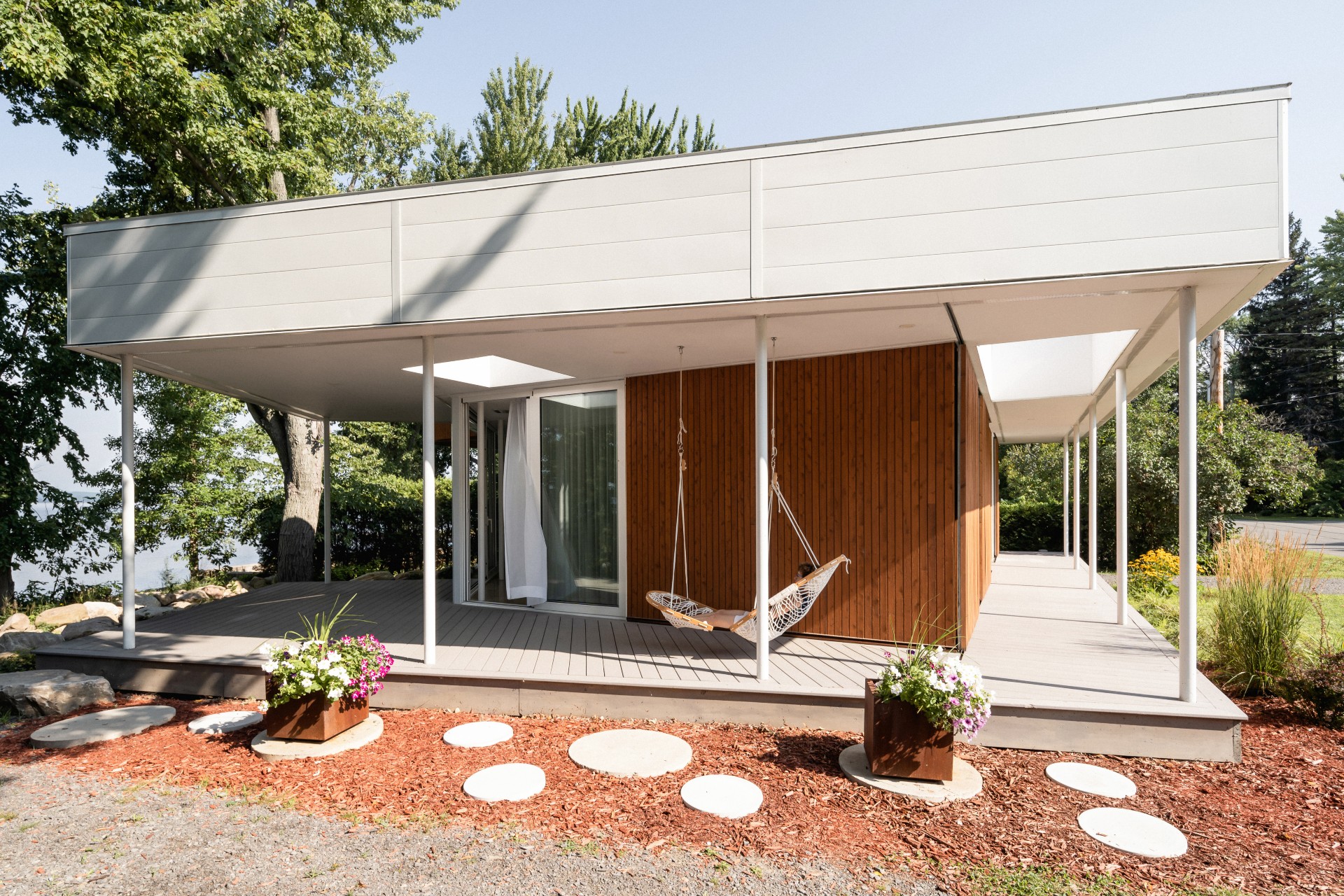
The cottage is surrounded by a veranda, with far-reaching views across the water
The need to stay within flood lines dictated the cottage’s angular footprint, with the internal volume surrounded by a covered veranda. A large white roof contrasts strongly with the vertical red timber cladding, while the sleeping area, along with a bathroom and small sitting room, is set within an elliptical volume perched on the roof, part wooden boat, part conning tower.
From the bed, a curved bank of windows offers views through the treetops to the lake beyond. It’s strongly reminiscent of another self-consciously boat-like space, David Kohn and Fiona Banner’s 2012 Room for London installation; just swap out the London panorama for a distant Canadian riverbank.
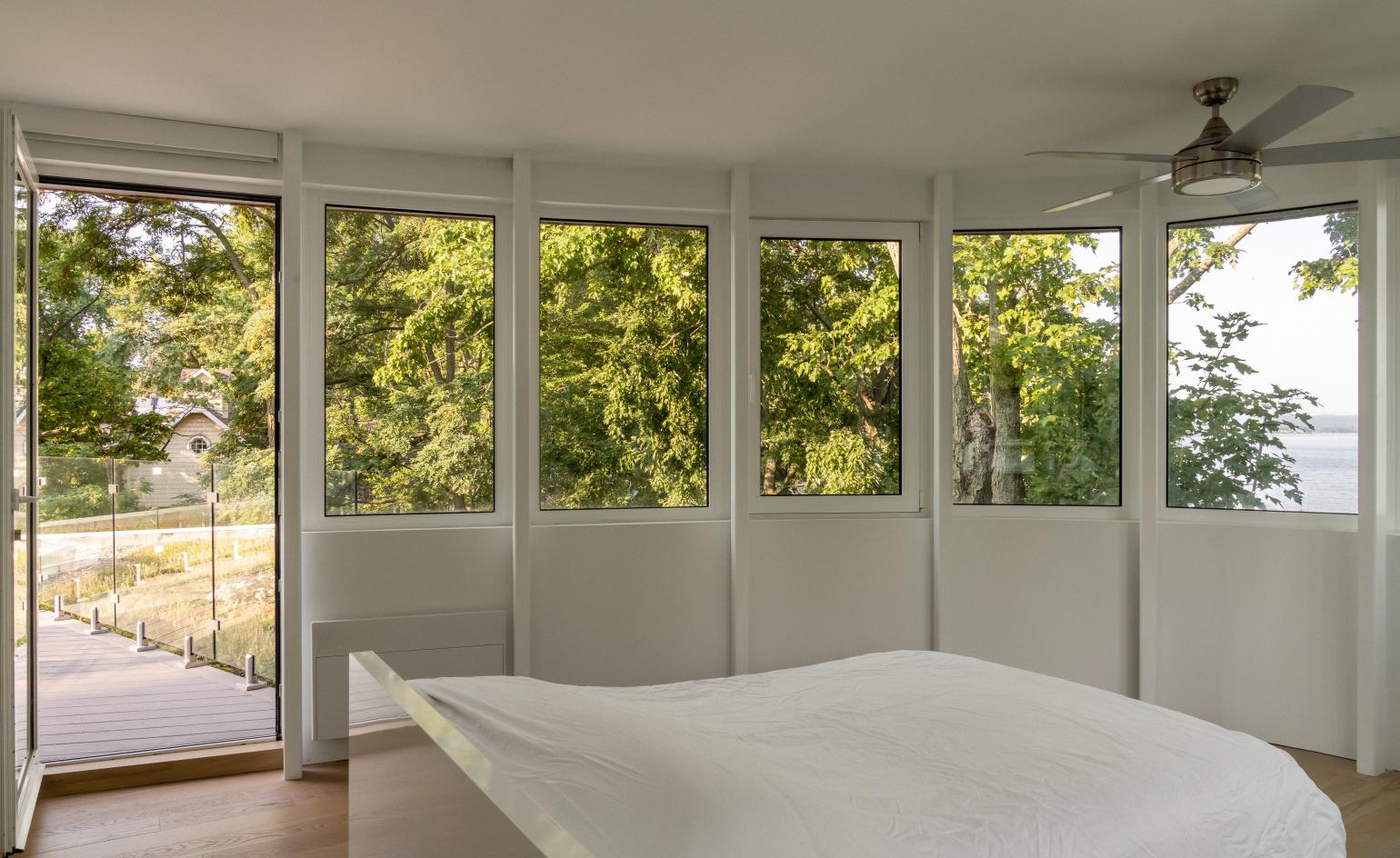
The bedroom offers elevated views across the lake and access to the green roof and terrace
Downstairs, all is minimalist and hard-wearing, with concrete floors and chunky wooden furniture. The living space is lined with windows on the lake-side elevation, with a veranda that’s protected from direct sun and rain by the oversailing roof to create a true inside-outside space. The front façade also has large floor to ceiling windows, although these can be concealed by sliding wooden panels when the cottage is not in use.
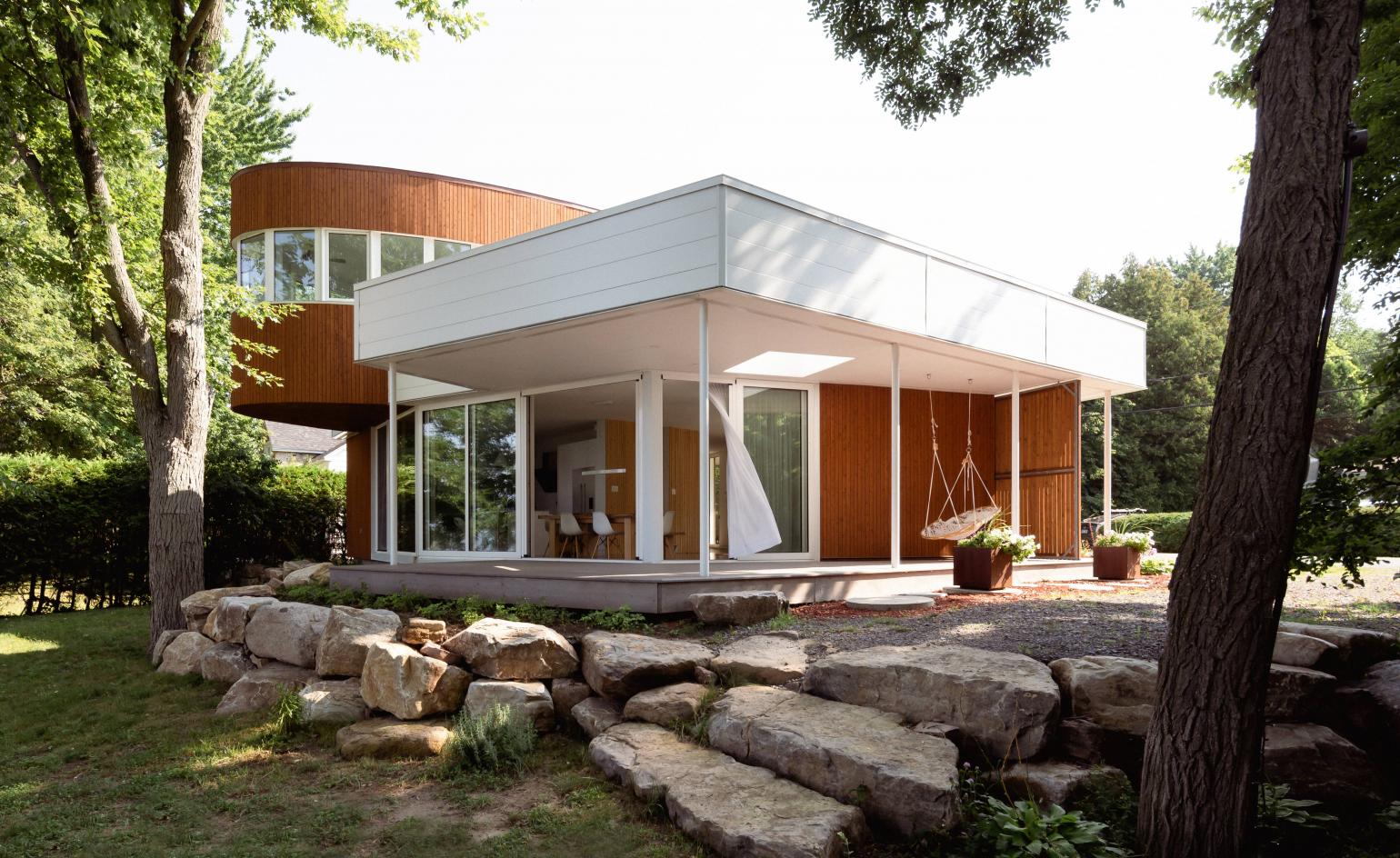
The bedroom rises up above the main house like the hull of a boat
The supporting steel structure is left in plain sight, with slender white painted columns visible inside and out to give a modernist rhythm to the façade. They support the large white roof that extends over the veranda and helps cool the interior in the summer. This also contains soil and planting for the green roof system, alongside a compact roof terrace, both of which are accessible from the master bedroom and the upstairs sitting area.

Concrete floors, minimal furniture and exceptional craftsmanship define the simple interiors
The asymmetric planning and unconventional forms give the structure a playful and idiosyncratic character. Heat comes from a wood burning stove in the heart of the space, and all the windows can be covered by floor to ceiling curtains, setting up a warm, traditional cottage-like feel that’s at odds with the delicacy of the structure.
Receive our daily digest of inspiration, escapism and design stories from around the world direct to your inbox.
Bernier, who completed the project with his colleagues Anick Thibeault, Alexandre Bernier and Francis Martel-Labrecque, set up his Montreal-based practice in 1999. Fine craftsmanship and minimal detailing are characteristic qualities of the studio’s work.
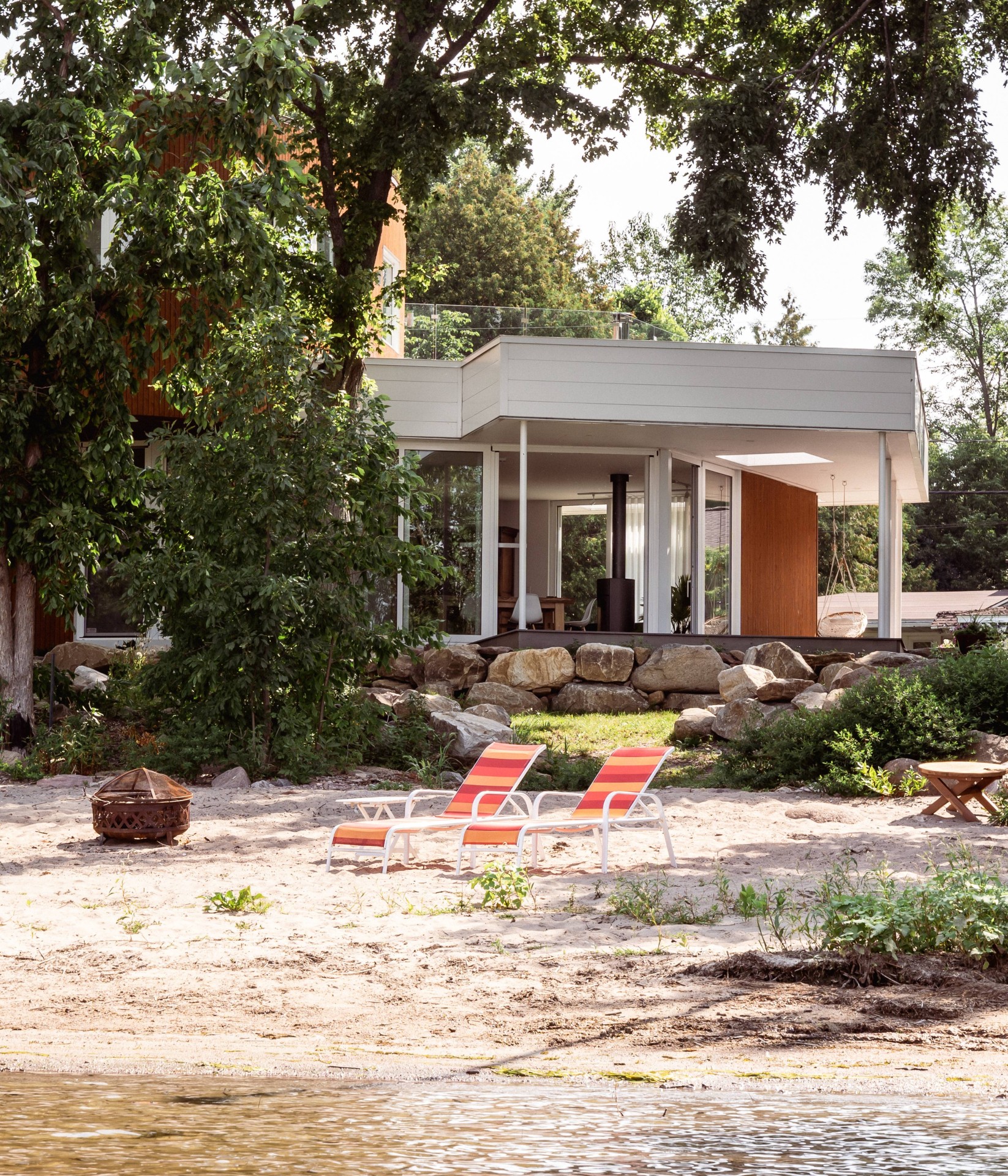
INFORMATION
Jonathan Bell has written for Wallpaper* magazine since 1999, covering everything from architecture and transport design to books, tech and graphic design. He is now the magazine’s Transport and Technology Editor. Jonathan has written and edited 15 books, including Concept Car Design, 21st Century House, and The New Modern House. He is also the host of Wallpaper’s first podcast.
-
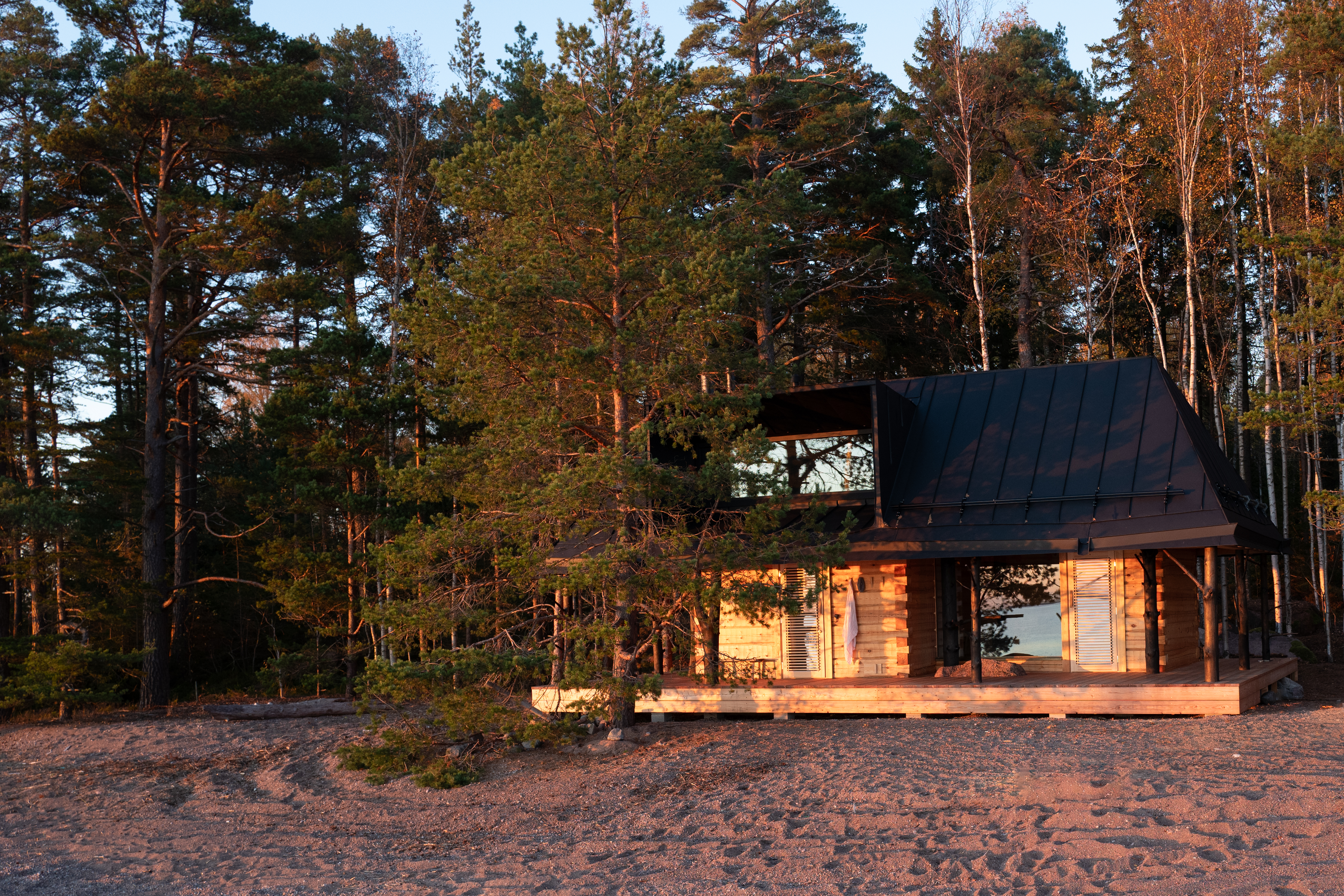 Wallpaper* Design Awards: this Finnish island sauna is Life-Enhancer of the Year 2026
Wallpaper* Design Awards: this Finnish island sauna is Life-Enhancer of the Year 2026Puusauna harnesses the power of trees, using whole trunks in its exquisite architecture by Jaakko Torvinen, which earns it a Wallpaper* Design Award
-
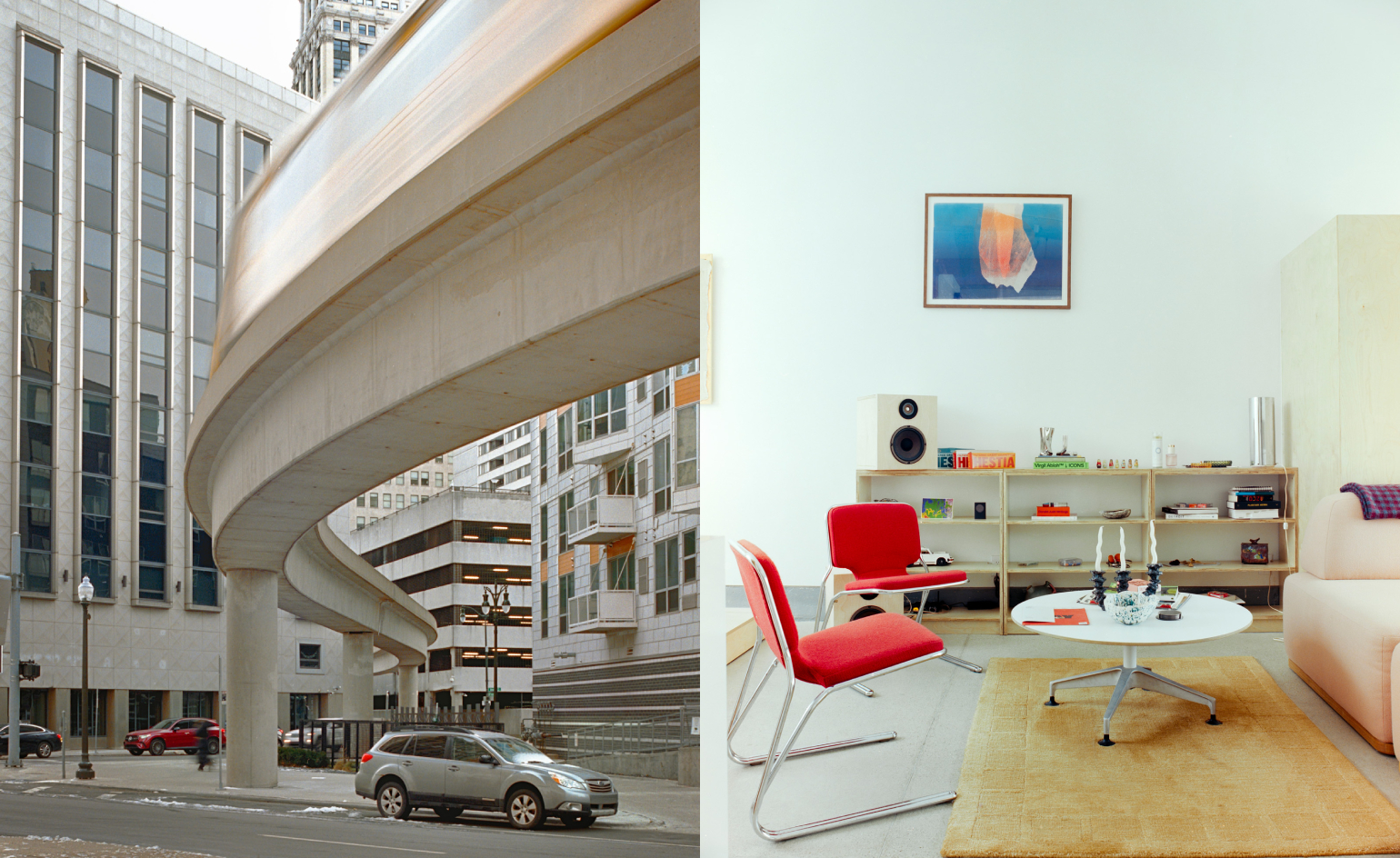 Wallpaper* Design Awards: Detroit is City of the Year 2026
Wallpaper* Design Awards: Detroit is City of the Year 2026Once a byword for urban distress, the Motor City is undergoing a fresh wave of regeneration, driven by progressive developers, design distinctions and dynamic investment
-
 Wallpaper* Design Awards: Willo Perron is Designer of the Year 2026
Wallpaper* Design Awards: Willo Perron is Designer of the Year 2026The mastermind behind some of the world’s most spectacular cultural moments, Willo Perron has been capturing the creative zeitgeist for 20 years. We interview the designer, honoured in the Wallpaper* Design Awards 2026
-
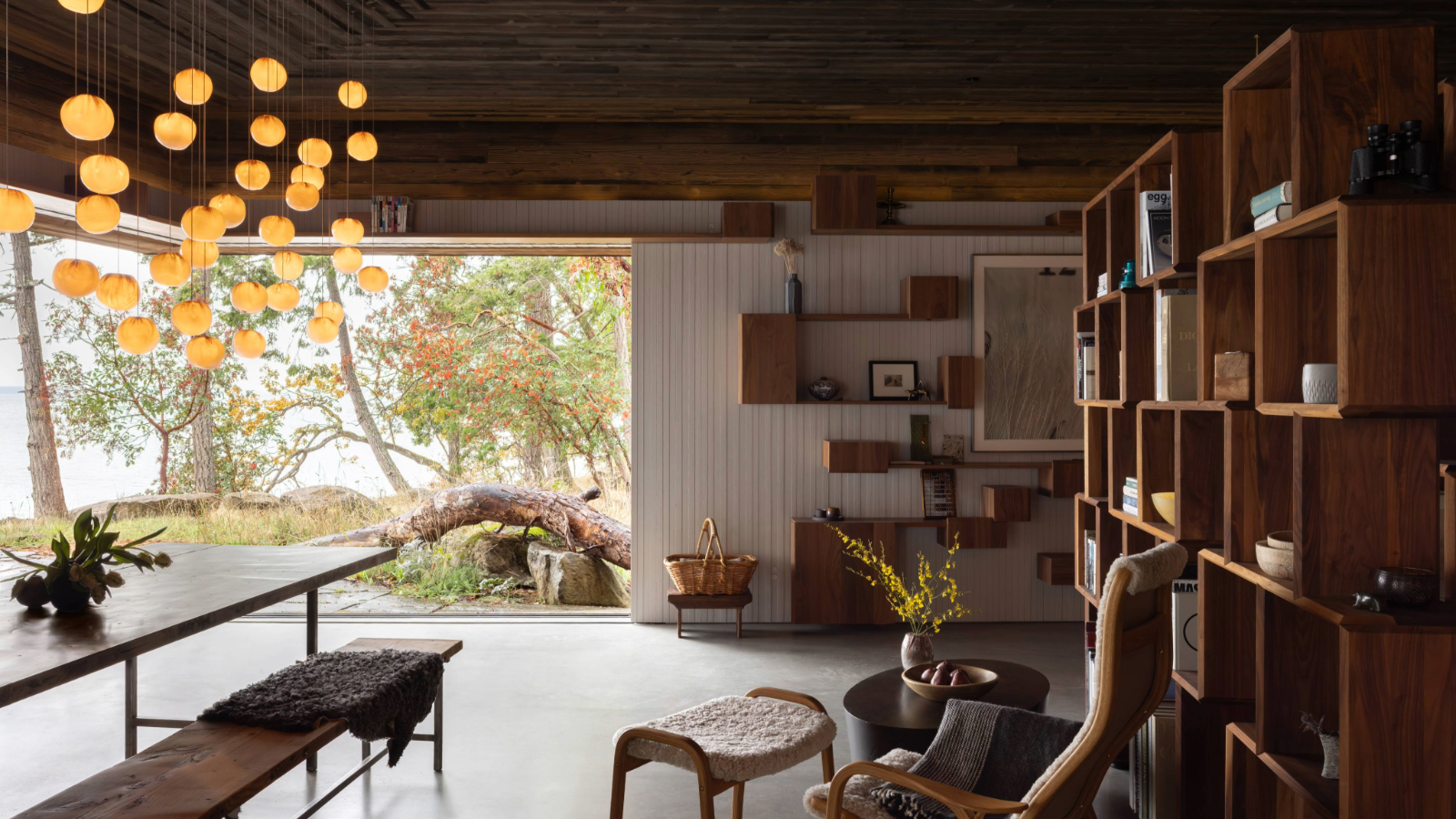 This retreat deep in the woods of Canada takes visitors on a playful journey
This retreat deep in the woods of Canada takes visitors on a playful journey91.0 Bridge House, a new retreat by Omer Arbel, is designed like a path through the forest, suspended between ferns and tree canopy in the Gulf Island archipelago
-
 The Architecture Edit: Wallpaper’s houses of the month
The Architecture Edit: Wallpaper’s houses of the monthFrom Malibu beach pads to cosy cabins blanketed in snow, Wallpaper* has featured some incredible homes this month. We profile our favourites below
-
 Explore the riches of Morse House, the Canadian modernist gem on the market
Explore the riches of Morse House, the Canadian modernist gem on the marketMorse House, designed by Thompson, Berwick & Pratt Architects in 1982 on Vancouver's Bowen Island, is on the market – might you be the new custodian of its modernist legacy?
-
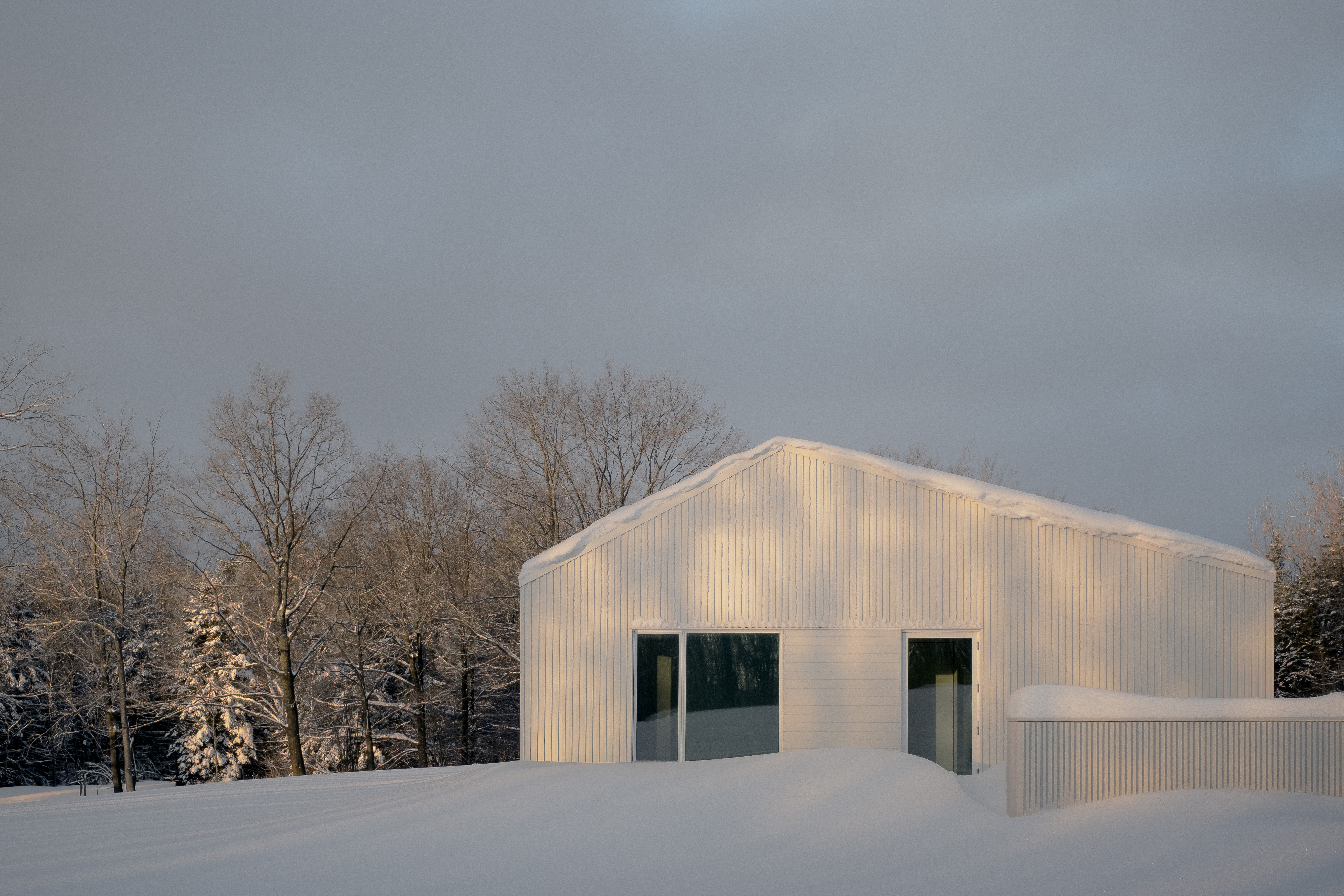 Cosy up in a snowy Canadian cabin inspired by utilitarian farmhouses
Cosy up in a snowy Canadian cabin inspired by utilitarian farmhousesTimbertop is a minimalist shelter overlooking the woodland home of wild deer, porcupines and turkeys
-
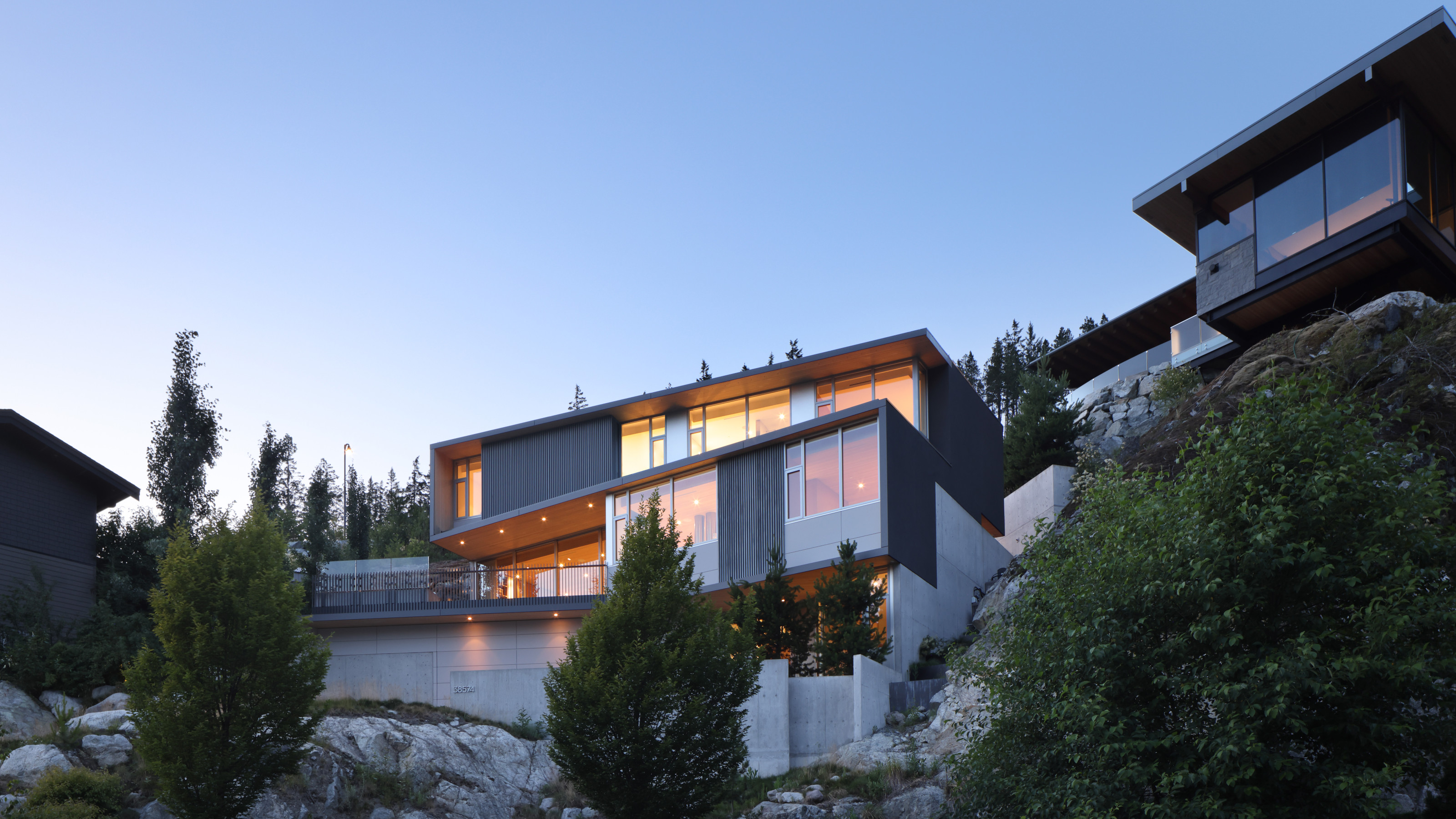 Buy yourself a Sanctuary, a serene house above the British Columbia landscape
Buy yourself a Sanctuary, a serene house above the British Columbia landscapeThe Sanctuary was designed by BattersbyHowat for clients who wanted a contemporary home that was also a retreat into nature. Now it’s on the market via West Coast Modern
-
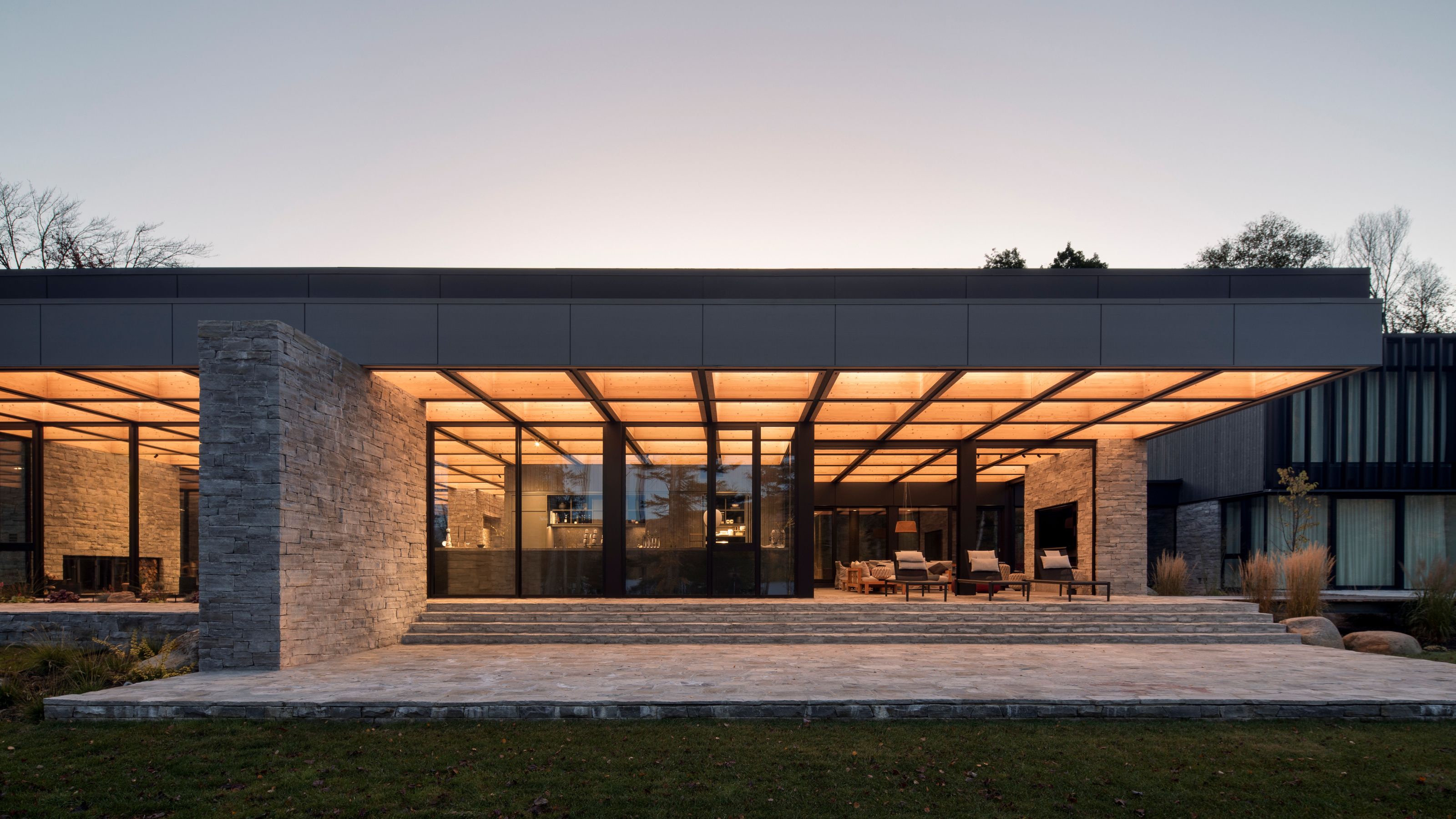 La Maison de la Baie de l’Ours melds modernism into the shores of a Québécois lake
La Maison de la Baie de l’Ours melds modernism into the shores of a Québécois lakeACDF Architecture’s grand family retreat in Quebec offers a series of flowing living spaces and private bedrooms beneath a monumental wooden roof
-
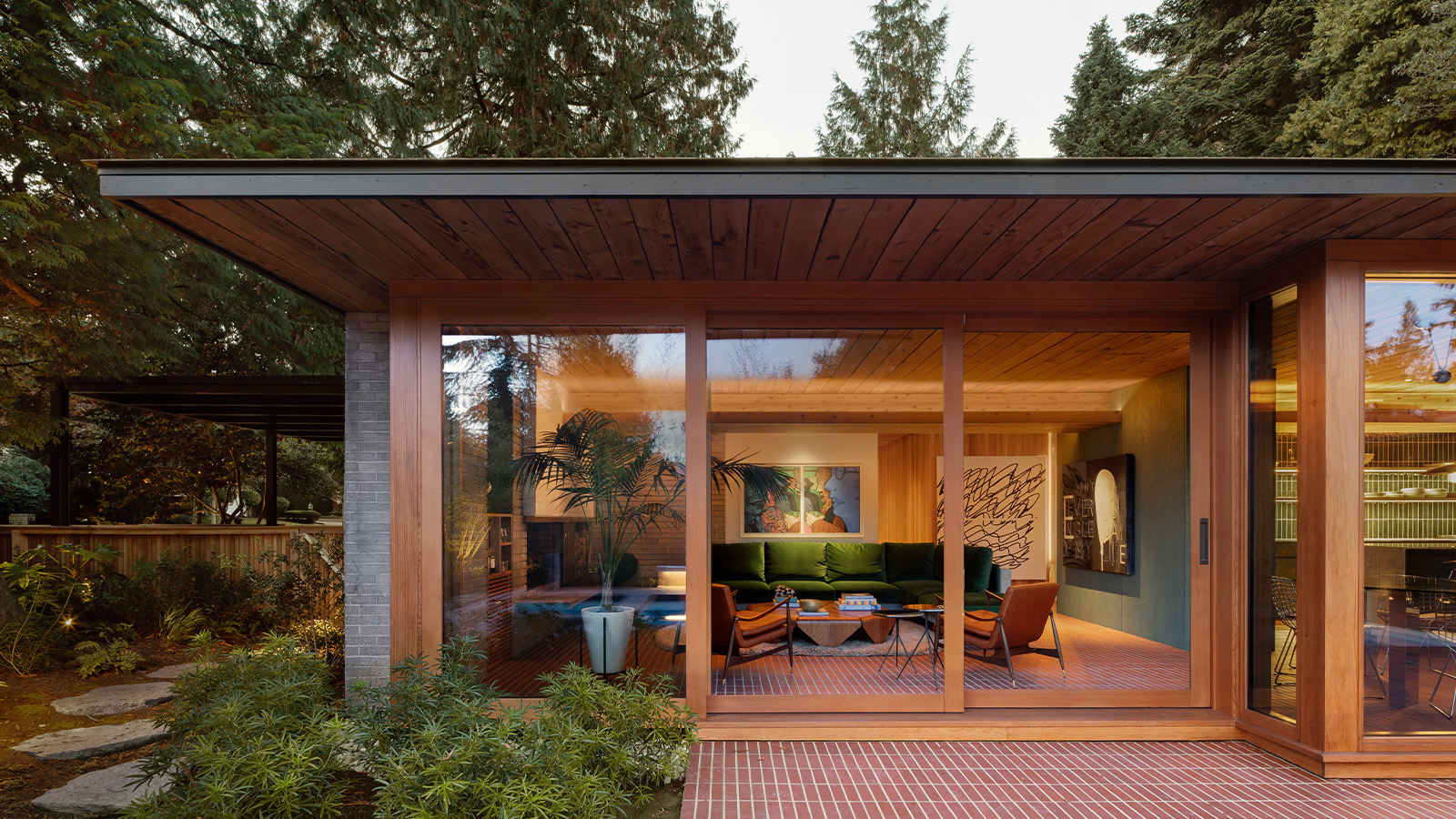 Peel back maple branches to reveal this cosy midcentury Vancouver gem
Peel back maple branches to reveal this cosy midcentury Vancouver gemOsler House, a midcentury Vancouver home, has been refreshed by Scott & Scott Architects, who wanted to pay tribute to the building's 20th-century modernist roots
-
 A spectacular waterside house in Canada results from a radical overhaul
A spectacular waterside house in Canada results from a radical overhaulSplyce Design’s Shoreline House occupies an idyllic site in British Columbia. Refurbished and updated, the structure has been transformed into a waterside retreat